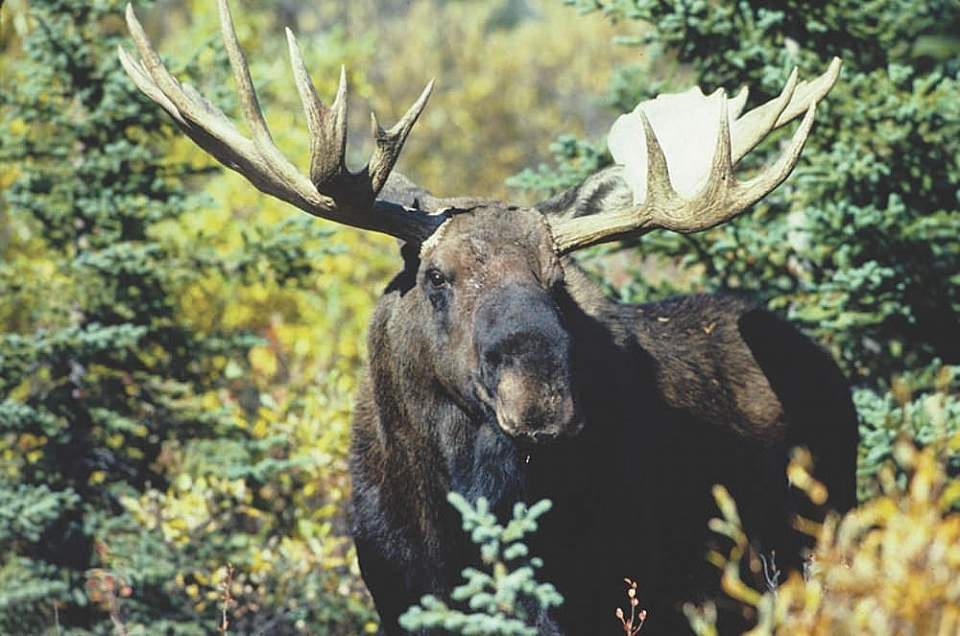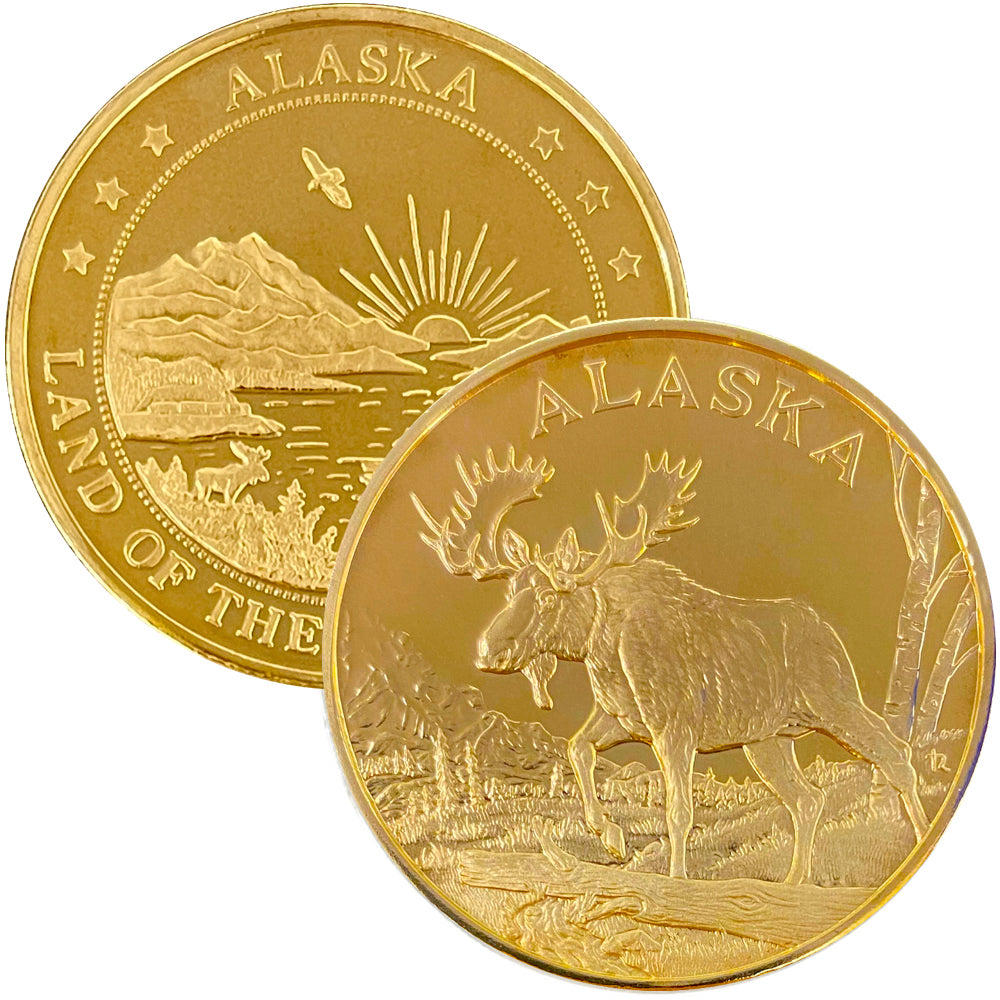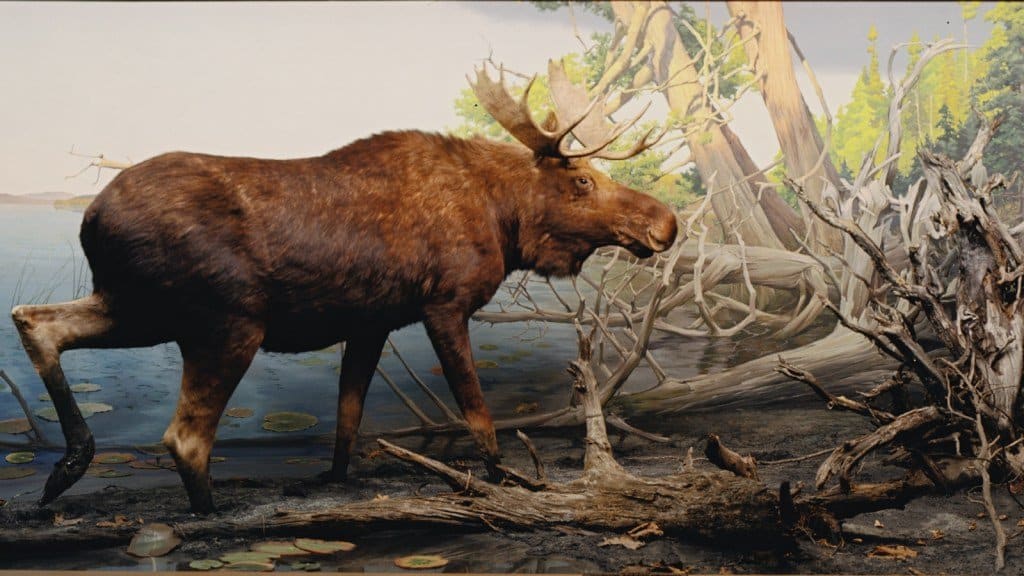Moose are in rut during the fall season from late September to early October. This is the mating season for moose, characterized by males engaging in aggressive behavior to compete for females.
As the largest member of the deer family, moose rut is an intense and fascinating spectacle of nature. During this period, male moose become more vocal, display dominance, and mark their territories with strong, musky scents to attract females. The rutting season is crucial for the survival and continuation of the species, as it allows for the mating and reproduction of moose.
Understanding when moose are in rut is important for wildlife enthusiasts and researchers to witness and study this unique behavior in the animal kingdom.

Credit: www.alaska.org
The Moose Rut Season
During the Moose Rut Season, which typically occurs in the fall, male moose exhibit exciting behaviors as they seek to find a mate.
What Is The Moose Rut?
The Moose Rut is the breeding season for moose, where bull moose become more aggressive and territorial.
Signs Of Moose Rut
- Increased vocalization and grunting from male moose
- Rubbing their antlers against trees and bushes
- Chasing and fighting with other males
Observing these behaviors can indicate that the moose rut season is in full swing, making it a fascinating time to witness nature in action.
Understanding Moose Behavior
Understanding Moose Behavior:
Mating Behavior
Moose engage in mating behavior during the rutting season, which typically occurs in the fall.
Territorial Behavior
Male moose exhibit territorial behavior by marking their territory with urine and engaging in loud vocalizations to challenge other males.
Tips For Observing Moose Rut
When it comes to observing moose rut, it’s essential to understand the best time for viewing and the safety precautions to take while doing so. The rutting season is an exhilarating time when male moose, or bulls, actively seek out female moose, or cows, for mating. To make the most of witnessing this remarkable behavior, these tips will guide you on when, where, and how to observe moose rut in a safe and respectful manner.
Best Time For Viewing
The best time for viewing moose rut is typically during the fall, specifically in late September and early October. During this period, the bulls are most active in their pursuit of cows, and their distinctive calls and displays are most prevalent. Opt for early mornings or late evenings, as moose tend to be more active during these times. Look for areas near bodies of water, as moose often congregate near lakes and ponds during rut.
Safety Precautions
- Stay at a safe distance. The rutting behavior can make bulls more agitated and aggressive, so it’s crucial to keep a distance of at least 50 yards to observe without disturbing them.
- Be aware of your surroundings. When observing moose rut, always stay alert for other wildlife and be cautious of any potential hazards, such as uneven terrain or dense vegetation.
- Respect their space. Avoid making sudden movements or loud noises, and never approach moose or attempt to touch them. Respect their natural behavior and habitat.
- Use binoculars or a camera with a zoom lens. This will allow you to observe moose from a safe distance without encroaching on their territory.

Credit: www.jacksonholetraveler.com
Impact Of Rut On Moose Population
During rut season, which typically occurs in the fall, moose engage in aggressive behavior and mating rituals. The increased activity during this period can impact moose populations as competition among males can lead to fights and injuries, affecting their overall numbers.
This natural behavior plays a significant role in regulating moose populations.
The rutting season, also known as the mating season, has a significant impact on the moose population. Let’s take a closer look at the role it plays in moose ecology and the conservation challenges associated with it.
Role In Moose Ecology
The rut is a critical period for the moose population, as it determines the future generation. During this time, male moose, known as bulls, engage in intense competition to secure mates. They display aggressive behaviors, such as sparring with their antlers, and emit loud vocalizations to establish dominance.
This high-intensity competition among bulls ensures that only the strongest and fittest individuals father the next generation. As a result, the genetic diversity of the moose population improves, leading to healthier individuals with optimal traits for survival.
Conservation Challenges
The rutting season also presents unique challenges for moose conservation efforts. Increased aggressiveness and territoriality observed in bulls during this period can lead to higher rates of injuries and fatalities among individuals.
The intense competition for mates often results in bulls engaging in risky behaviors, such as charging vehicles or humans who unwittingly enter their territory. This poses a threat to human safety and requires careful management strategies to prevent conflict.
Furthermore, the increased movement and dispersal of both males and females during the rut can impact their access to suitable habitats and vital resources. Disruption of migratory patterns and displacement from preferred feeding grounds can negatively affect the overall health and reproductive success of the moose population.
In addition, the increased energy expenditure and stress levels during rutting can make moose more susceptible to diseases and parasites. This poses a significant challenge for wildlife management authorities, who must address these health concerns while ensuring the long-term sustainability of the moose population.
Cultural And Folklore Significance
The moose, a majestic creature, holds a significant place in cultural traditions and folklore across different communities. Native American traditions and folklore have rich stories and beliefs surrounding the moose during its rutting season. Similarly, moose in folklore have been portrayed as powerful and mystical beings in various tales and legends. Let’s explore the cultural and folklore significance of moose in more detail.
Native American Traditions
The Native American tribes have a deep connection with nature and believe in the spiritual significance of animals. The moose, being a prominent creature in the wilderness, has found its place in various Native American traditions. These tribes view the moose as a symbol of strength, wisdom, and renewal.
In Native American folklore, the moose is often associated with the changing seasons, particularly during the rutting season. This season, which typically occurs from late September to early October, is a time of heightened energy and activity for moose. Native American tribes interpret this as a time of fertility, growth, and new beginnings.
The moose’s massive antlers play a significant role in Native American traditions. These antlers, symbolic of power and protection, are often used in ceremonies and rituals. They are believed to hold the strength and wisdom of the moose, acting as a channel between the spiritual and physical realms.
Moose In Folklore
Beyond Native American traditions, moose have also captured the imagination of people through folklore and legends. In various cultures, moose have been depicted as majestic, mystical, and even mischievous creatures.
For example, in Scandinavian folklore, moose are sometimes depicted as enchanted creatures that possess magical abilities. They are believed to help lost travelers find their way home and bring good luck to those who encounter them in the wild.
In Native American folklore, moose are often portrayed as guardians of the forests. They are said to possess an innate sense of balance and harmony, ensuring the well-being of the ecosystem they inhabit. These stories emphasize the importance of respecting and protecting nature.
Overall, the cultural and folklore significance of moose during their rutting season is a testament to the deep connection humans have with wildlife and the natural world. Whether through Native American traditions or imaginative tales, moose continue to inspire and fascinate people, reminding us of the beauty and mystery that exists beyond our everyday lives.

Credit: www.foreststidesandtreasures.com
Frequently Asked Questions On When Are Moose In Rut
When Do Moose Go Into Rut?
Moose go into rut during the fall season, usually around September or October. During this time, male moose become very aggressive and vocal, and they compete with other males for the attention of female moose.
How Long Does The Moose Rut Last?
The moose rut can last for several weeks, with peak activity occurring around the midpoint of the rut. During this time, male moose will aggressively defend their territory and fight with other males.
Why Do Moose Rut?
Moose rut to compete for mates. The males become highly territorial and engage in fights to establish dominance and win the right to mate with female moose. Rutting behavior also helps synchronize the reproductive cycle of the population and ensures successful breeding.
How Can You Tell If A Moose Is In Rut?
You can tell if a moose is in rut by observing its behavior and appearance. Male moose in rut will often have swollen necks, frothy saliva around their mouths, and they will frequently urinate and dig up the ground with their antlers.
They may also emit loud grunting sounds.
Conclusion
Understanding the rutting season of moose is crucial for wildlife observation. By knowing when moose are in rut, you can plan your outdoor excursions to witness this magnificent natural spectacle. Whether it’s for photography or simply appreciating wildlife, being aware of the rutting season enhances your experience in the great outdoors.



